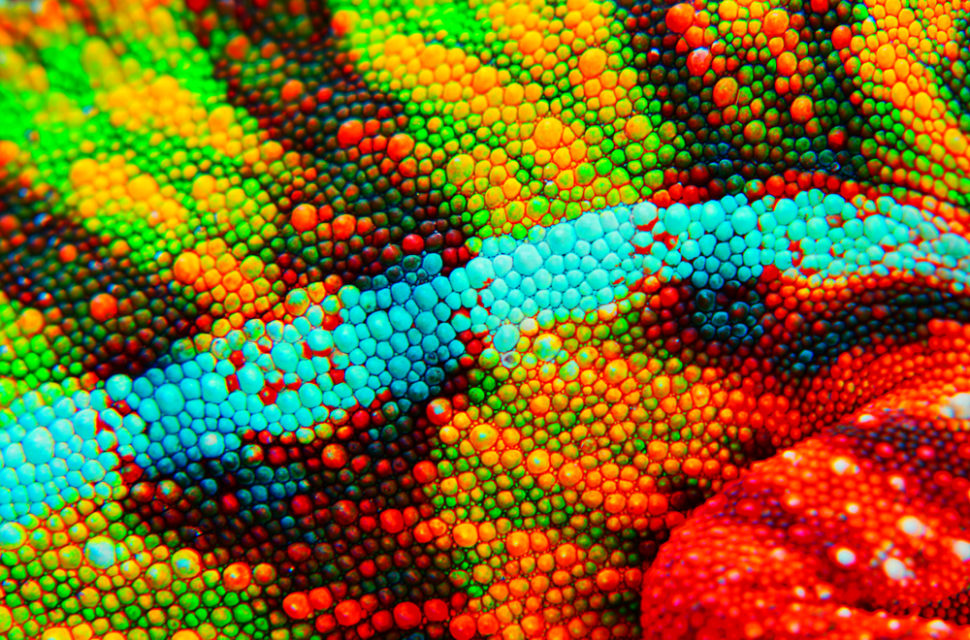Whether it’s for camouflage or attracting mates, creatures such as neon tetra fish and chameleons have always been able to alter their color. And scientists have always believed that we can replicate these abilities to create artificial smart skin.
Unfortunately, attempts at creating such a smart skin have ultimately failed due to lack of materials. Well, not anymore.
According to a recent paper published in the ACS Nano, researchers from Emory University have finally developed a flexible smart skin that changes color like the chameleons. The new skin reacts to heat and sunlight to change color.
Khalid Salaita, senior author of the paper and an Emory professor of chemistry, said:
“Scientists in the field of photonic crystals have been working for a long time to try to create color-changing smart skins for a range of potential applications, such as camouflage, chemical sensing, and anti-counterfeiting tags. While our work is still in the fundamental stages, we’ve established the principles for a new approach to explore and build upon.”
So, how does it works?
A Chameleon-Inspired Smart Skin
Unlike most colors, the hues on a chameleon’s skin do not depend on dyes or pigments. Instead, the creature has an array of tiny structures called phonic crystals.
When light reflects from the microscopic surfaces, it interferes with the other beams of reflected light and produces a color. As the distance between the photonic crystals varies, so does the hue changes.
An example of such is how the distance between these crystal changes when the chameleon tenses, which leads to a change in color.
Scientists have found a way to mimic these natural abilities by embedding phonic crystal in flexible materials such as hydrogels. So, when the material expands or contracts like an accordion, the color changes.
Unfortunately, the constant fluctuation can cause the material to strain, consequently causing it to buckle. So, the researchers look to the parrot to figure out how to design a strain-accommodating smart skin.
After studying the time-lapses images of chameleon skin, the researchers noted the creature’s skin cells are not entirely made of photonic crystal arrays. A considerable part of the skin is actually colorless.
So, the researchers hypothesized that the colorless cells might be responsible for accommodating the strain that comes with the expansion and contraction of the photonic crystals.
Using this observation, the team arranged the photonic crystal arrays in a hydrogel. Then, they embedded the array in a second, non-color changing hydrogel, which acts as a supporting layer.
It worked! When exposed to heat, the resulting material changed color while maintaining its size. Also, the researchers noted that the smart skin changed its hue in response to direct sunlight.
Yixiao Dong, a Ph.D. candidate in Emory’s Department of Chemistry, noted:
“We’ve provided a general framework to guide the future design of artificial smart skins. There is still a long way to go for real-life applications, but it’s exciting to push the field another step further.”
Using this technology, we could someday have better camouflage, including improved signaling and anti-counterfeiting.




Comments (0)
Least Recent